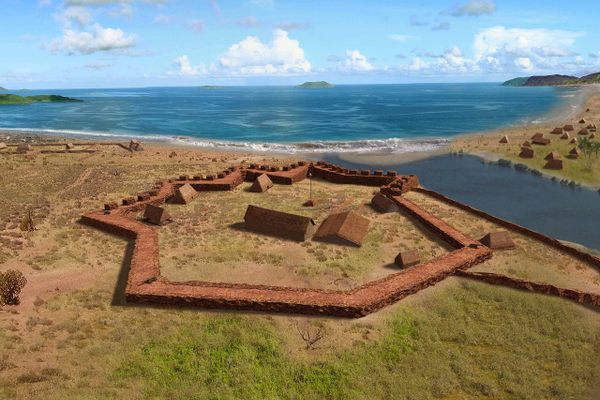About
In the early years of the 16th century, Spanish conquistador Juan Ponce de León established a settlement on the Caribbean island of Puerto Rico. Located in the northern municipality of Guaynabo, the settlement, which he called Caparra, remains the oldest-known relic of European presence in what is now United States territory.
As the first Spanish Crown-appointed governor of Puerto Rico, Ponce de León oversaw the cultivation of capital city Caparra (originally named La Ciudad de Puerto Rico). Caparra was built out from one original home, which was crafted using the tapia or “rammed earth” technique of compressing raw materials into a compact structure. Subsequent buildings including a military fort were constructed using stone and wood, and homes were outfitted with decorative tiles shipped over from Spain. In 1512, a cathedral was built to crown the small city, which is believed to have been inhabited by some 300 people in its heyday.
In the coming decade, residents of Caparra grew tired of the frequent attacks by neighboring indigenous peoples and the city’s impractical distance from the sea. Caparra was eventually abandoned around 1521 for the more favorable coastal region that is present-day Old San Juan. But the remains of Puerto Rico’s first capital serve as an indication of what life was like for the earliest European settlers in the New World as well as for the native Taíno people, whom Ponce de León enslaved to work in Caparra.
It wasn’t until the 1930s that a historian by the name of Don Adolfo de Hostos inaugurated a series of excavations at Caparra, which unearthed stone foundations, the remnants of what is believed to have been Ponce de León’s home, bits of Spanish tile, and Taíno artifacts by which archaeologists have pieced together a vision of Puerto Rico’s first European-settled city.
Today, Caparra is but a collection of small ruins belonging to The Museum of the Conquest and Colonization of Puerto Rico, a one-gallery point of interest in modern-day Guaynabo that houses artifacts and historical documents relating to the site.
Caparra was added to the National Register of Historic Places in 1984, and was declared a National Historic Landmark in 1994.
Related Tags
Know Before You Go
The Museum of the Conquest and Colonization of Puerto Rico is open Monday through Friday, 9 a.m. to 4 p.m. Visitors should note that all museum labels are in Spanish.
Published
June 4, 2019
Sources
- https://en.wikipedia.org/wiki/Caparra_Archaeological_Site
- https://www.nps.gov/NR/TRAVEL/AMERICAN_LATINO_HERITAGE/Caparra_Archeological_Site.html
- https://www.lonelyplanet.com/puerto-rico/san-juan-around/attractions/caparra-archaeological-site/a/poi-sig/1419534/358130
- https://www.puertorico.com/regions/la-monta-a-central/caparra/
- https://www.puertorico.com/attractions/sights/caparra-ruins/

























